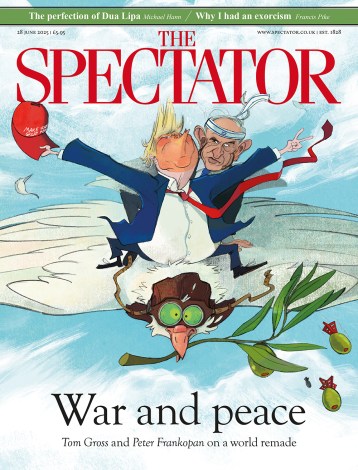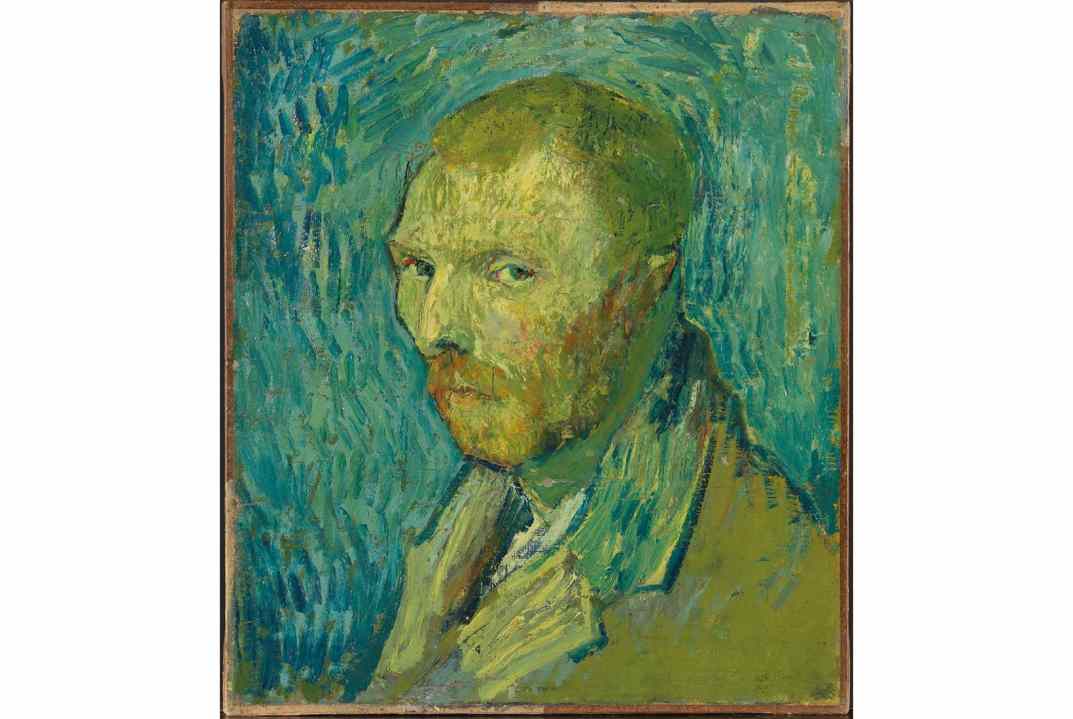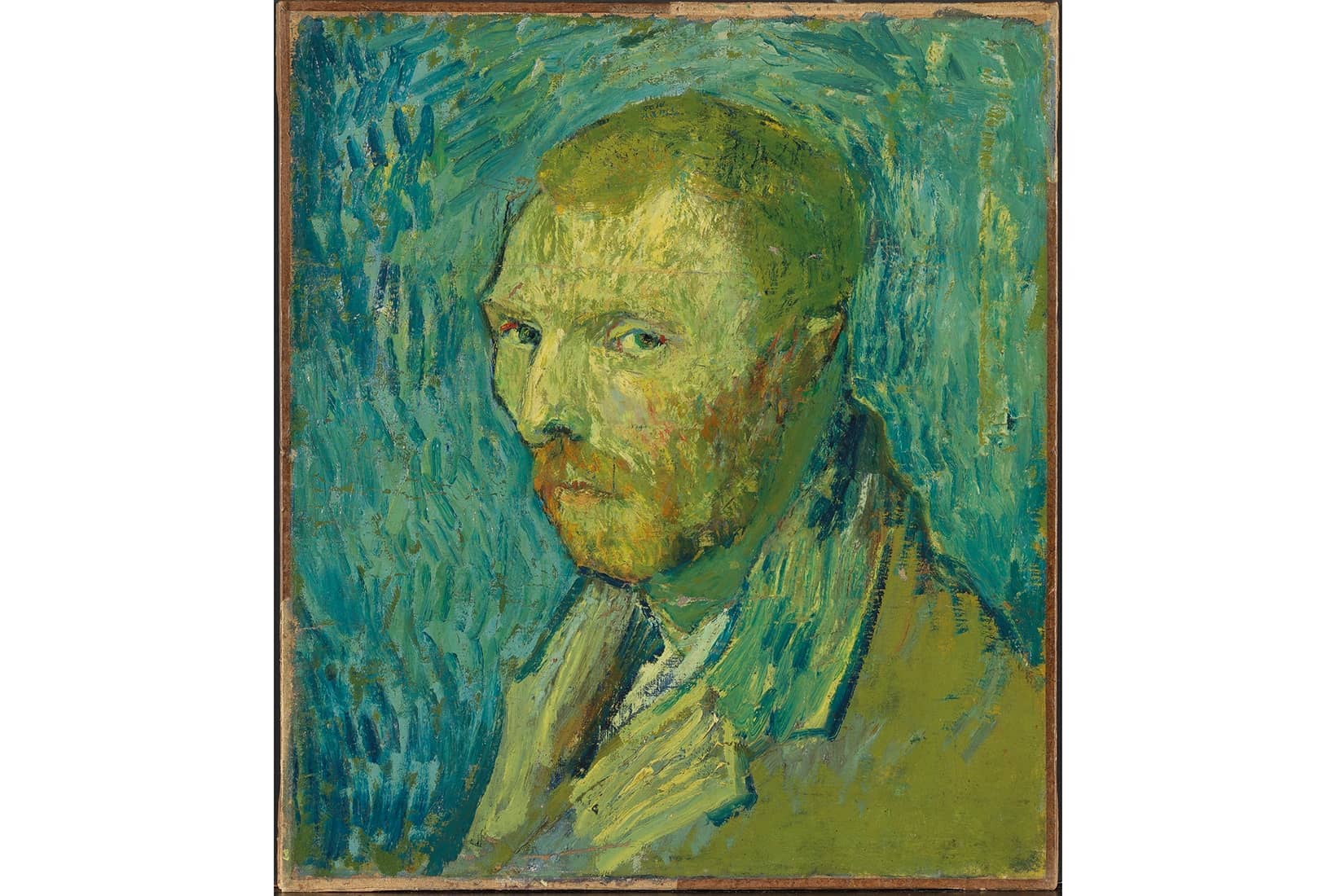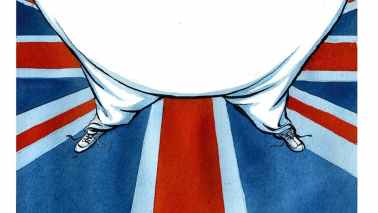In September 1889, Vincent van Gogh sent his brother Theo a new self-portrait from the mental hospital at Saint-Rémy-de-Provence. ‘You must look at it for some time,’ he instructed, then ‘you’ll see, I hope, that my physiognomy has grown much calmer, although the gaze may be vaguer than before, so it appears to me.’
Vincent was severely ill and was in the hospital to recover from his affliction, the nature of which remains controversial. Yet he carried on creating marvellous pictures, including several of himself. One of the questions raised by Van Gogh. Self-Portraits, the wonderful exhibition at the Courtauld Gallery, is simple but fundamental: why?
We take it as a given that artists depict themselves; but some never do, and others only rarely. Vincent produced roughly 35 images of himself between early 1886 and autumn 1889 (the precise number depends on how you define ‘self-portrait’), which averages almost ten a year. Of these, 15 have been assembled in this show: a remarkable feat of art-world diplomacy as well as an astonishing sight.
Arrayed on the walls of Somerset House, these pictures amount to a gripping exercise in self-examination
Arrayed on the walls of Somerset House, these pictures amount to an utterly gripping exercise in self-examination. Collectively, they begin to provide some answers to that conundrum: why did Van Gogh paint himself so much?
The first and most mundanely practical is: because he was there. Vincent’s greatest ambition, clearly stated in his letters, was to paint people. But he had recurring difficulties finding models for two reasons: firstly paying them cost money, of which he was always short; secondly, his disquieting manner apparently made many potential sitters nervous of spending time alone in his company. In Arles the locals seem to have been afraid he’d put the evil eye on them. But Van Gogh was always ready and willing to pose for himself.
This helps to explain the abundance of self-portraits — more than two dozen —from 1886 and 1887, the period he spent living in Paris. These are, among other things, five-finger exercises in which he tried out new techniques and experimented with the brighter, impressionist palette that he was adopting at that time. In a picture such as ‘Self-Portrait with Grey Felt Hat’ (September–October 1887) you can see the Van Gogh ‘signature style’ coming into being — the broad strokes of the brush with which he draws in paint, the brilliant use of complementary colours, so his head is surrounded by a whirling halo of blue and red and forehead furrowed with lines of green. Here is a portrait of the artist learning to be ‘Van Gogh’.
But looking at these self-images lined up at the Courtauld suggests another reason why he painted himself so much: because even to himself Vincent was an interesting subject. He must have had an extraordinarily intense presence. In a picture from summer 1887, his hair seems to be bristling as if with an electrical charge. This helps to explain why, as Martin Bailey points out in a catalogue essay, quite a few other artists, including Gauguin and Toulouse-Lautrec, made pictures of him too.
On the other hand, Vincent was also highly changeable. He once wrote to his sister that one sitter could be the subject for many different portraits. This phenomenon, a general truth, is in part because the artist’s interest changes over time, but also because no subject will be quite the same from one day to the next day. Some people alter more than others; Van Gogh evidently changed a lot, partly for physical reasons. In some pictures he looks hollow-cheeked, possibly because he was not wearing his false teeth (he’d had about 12 extracted). He also intermittently shaved off, then regrew his whiskers. Above all his moods swung wildly, the depths and heights growing more extreme as time went on.
It is too romantic to imagine Van Gogh was deliberately producing a diary or autobiography in paint. On the other hand, he explicitly wanted to make portraits that were deeper than photography (of which he had a low opinion), images that recorded ‘passionate expressions’.
This certainly applied to his own, ever more drastic metamorphoses. The climax of the exhibition lies in the juxtaposition of three pictures from the last full year of his life, 1889. In ‘Self-Portrait with Bandaged Ear’ done within weeks of his ear-mutilation at Christmas 1888, he is pale, shaken and withdrawn, but also — amazingly — back at work in his studio.
A picture from late August, painted during a bad attack, is even more of a victory over circumstances. Here Vincent’s electric gaze is switched off, eyes dead, posture slumped. But he still managed somehow to summon the concentration and energy to produce this work. Within a week or two he had created a masterpiece, begun on ‘the first day I got up’ and showing himself, ‘thin, pale as a devil’ but back again at his easel, brushes and palette in hand. In Vincent the will to paint was more powerful, apparently, than the will to live.







Comments